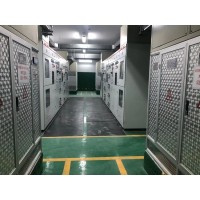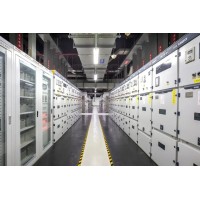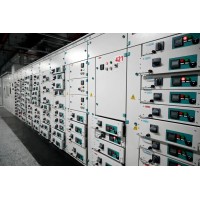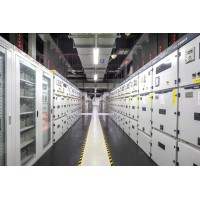简介:进行智能完井能够提高油藏管理水平,由于采用了一系列新技术,现在可以进行的监测内容远多于压力和温度。
First conceived as alternatives to costly or technically difficult interventions, intelligent wells that can be monitored and controlled remotely have evolved into a powerful reservoir management tool. As a result, after initially slow industry-wide uptake, their number is projected to increase fivefold in the next five years.
At the heart of intelligent wells are surface-actuated downhole valves, used to regulate flow from individual zones or laterals, and permanent downhole temperature and pressure sensors. Today, downhole control valves range from those with simple on-off controls to hydraulically actuated and electrically controlled, infinitely variable-setting chokes. These innovations permit engineers to design valves that can be remotely adjusted within a range of cross-sectional flow areas matched to a zone’s production profile. Schlumberger now reports a 97% reliability rate for its second-generation valves.
While the initial objective of intelligent well technology?extending well life?was effective, that was not the most efficient use of the technology. Instead, the technology’s true promise, the industry has come to understand, is best realized when intelligent wells are used as a tool for maximizing reserves recovery. This change in intelligent well identity ? from intervention avoidance to reservoir management tool ? has been greatly enhanced by the emergence of robust downhole permanent pressure and temperature sensors capable of functioning in harsh environments for extended periods of time. Their new role has also been furthered by increased longevity, the result of more reliable electrical connections that in the past had been a weak link in downhole electronics. Today, fully redundant, independently testable, mechanical and full-welded connectors and splices have delivered a step-change improvement in reliability.
Because of these new technologies, monitoring today includes much more than pressure and temperature data. Permanent downhole multiphase flowmeters, seismic sensors, and electrodes have been included to deliver formation imaging away from the well bore, and they are all being connected through control centers that facilitate almost instantaneous responses to changing conditions. Data from these intelligent completions are also used to continually enhance and update production models and simulations, perform and interpret production tests on individual zones and laterals, predict sand and water encroachment, and measure flow rate and water cut.
Smart choice
The advantages of reservoir monitoring and control are obvious. For example, since wells seldom cross only a single hydrocarbon-bearing zone, completion engineers are often forced to decide between commingling production from multiple zones and producing each zone sequentially. Historically, producing more than one zone at a time has been an option only when the zones are of compatible pressure and fluid composition, and no regulatory concerns exist. Two, three, and sometimes four perforated intervals also can be produced at the same time through completions in which each zone is mechanically isolated from the others and flowed to the surface through separate production strings.
Sequential production typically requires flowing one zone to its economic limit before plugging and abandoning it in order to move up the hole to complete the next zone.
This cycle is then repeated until all zones have been depleted. In almost all cases, this strategy leaves behind considerable reserves and results in poor production profiles because of extended periods of depletion within each zone.
In contrast, using intelligent completions in a sequential production scheme, which involves opening and closing each zone remotely from the surface, improves production by eliminating both intervention costs and poor production profiles. Variable-setting valves can also be used to eliminate sequential production in favor of commingling by managing flow from high-pressure zones to prevent crossflow.
This does not mean that intelligent completion technology guarantees added value wherever it is applied. Experience has shown that the degree to which production is improved by intelligent completions depends on such factors as porosity and permeability distribution within that reservoir. The decision to use intelligent wells does not require every well in a smart field to be an intelligent completion. The operator must first ascertain that the reservoir type in a given field is suitable for intelligent well technology and then make a similar determination for each well planned for the field.
Candidate screening processes range from a simple analytical approach to complex reservoir models. Given such inherent uncertainties as reservoir characteristics, produced fluid composition, well performance, and recovery efficiency, it is important to use a stochastic rather than deterministic approach in the screening process.
Guiding parameters
General experience-based guides for choosing an intelligent well strategy have emerged over time. In a reservoir with uniform permeability, for instance, remotely actuated valves would seem, at first glance, to be an effective tool for managing water influx and therefore increasing well life and ultimate recovery. But if the completion is to be set across a relatively short interval within that reservoir, an intelligent completion may not be economically justified since a sufficiently uneven fluid front may not develop. In other words, the oil and water streams may not be sufficiently distinct to allow control of one fluid flow stream without affecting the other, and an intelligent completion would be a waste of money.
While intelligent completions can be effective in layered reservoirs, for obvious reasons they are decidedly more efficient when the shale zone separating the sands is continuous and the seal impermeable. Therefore, within the same layered reservoir, some wells crossing reliably sealed layers are well-served by intelligent completions.
One set of mathematical models developed for candidate screening uses reservoir simulation and well simulation techniques to generate a comparative model of the benefits of intelligent completions. Scenarios are created to generate variance in reservoir performance affecting the timing of events requiring intervention, reservoir monitoring, or reservoir management and are often driven by geological uncertainty and reservoir heterogeneity.
In heterogeneous channel reservoirs, the benefits of intelligent completions depend on well performance, which, in turn, depends on well placement with respect to the permeability of the formation and connectivity of the channels. That is because the effectiveness of flow control valves depends on choking, which is a function of high deliverability. By their nature, however, the majority of heterogeneous reservoirs benefit from intelligent completions since their varying permeability and porosity tend to create just the kind of fluid front that variable-setting valves can best exploit.
Team effort in Saudi Arabia
In 2004, Saudi Aramco engineers drilled and completed a maximum reservoir contact (MRC) well as a proof-of-concept project. The well is in the Haradh field, the designation given the southwest portion of Saudi Arabia’s giant Ghawar field. The Haradh area was brought on production in three successive increments over nearly 10 years from May 1996 to January 2006. While Increment I was developed using conventional completions wells, experience led Saudi Aramco engineers to eventually include MRC, multi-laterals, and intelligent completions in final Increments II and III.
The A12 well in the Haradh area was originally completed from a horizontally set, 7-in. line. A 61⁄2-in. horizontal openhole section was then drilled from the bottom of the liner and a 41⁄2-in. liner set across a section that had incurred heavy fluid losses during drilling of the main well bore. Two more 61⁄2-in. laterals were drilled from the 7-in. liner and left as “barefoot,” or openhole, completions.
With this standard multilateral completion, no water was produced initially, but in less than one year, water cut had reached about 23%. As a result, available drawdown and overall production were reduced and treatment and disposal costs rose, prompting the operator to deem water-production control imperative.
In response, Schlumberger designed and deployed an intelligent completion system with multiposition, downhole flow control valves and surface flow-rate measurements to selectively manage water production from each of the three zones. Through optimization of the downhole control valves, water cut was reduced from 23% to almost zero.
The successful application of intelligent wells to the Haradh field, as detailed in a paper presented at the 2007 International Petroleum Technology Conference, held in Dubai, was the result of a project-management approach to the design, planning and installation processes. Five Schlumberger segments teamed with the Saudi Aramco facilities, production, drilling and workover; reservoir management; and reservoir description departments. Schlumberger and Saudi Aramco’s reservoir management and reservoir description departments built a multilateral well model in PIPESEM production system analysis software to calculate pressures opposite each lateral at various water cuts. The simulation estimated lateral performance across the valves over a range of pressure and flow rates.
Prior to starting the project, more than 30 multidisciplinary team members from Schlumberger and Saudi Aramco participated in a two-day forum to plan the project, run the completion on paper, agree on the design criteria and running procedures, and define responsibilities. Participants jointly developed a list of 28 action items in an effort to ensure a trouble-free operation.
The field team consisted of a completions installation crew, a reservoir evaluation wireline crew, a coiled tubing crew, and a multiphase flow testing crew managed through the Schlumberger advanced completions project manager. In view of the well’s workover history and the possible presence of casing deformations capable of affecting intelligent completion installation, the reservoir evaluation wireline and well services segments ran a USI UltraSonic Imager corrosion log on coiled tubing. The run confirmed the integrity of the casing and the suitability of QUANTUM gravel pack and MultiPort bypass packers with multiple porting. Using a PhaseTester portable multiphase well production monitoring system and the InterACT real-time monitoring and data delivery system, the team optimized the intelligent completion performance. This enabled the
Saudi Aramco engineers at their offices in town to adjust downhole flow-control valve settings in real time to maximize oil production and minimize water cut.
During equipment testing and installation, and subsequent flow testing of the well, each of the valves was actuated through more than 10 complete cycles?110 position changes, or the equivalent of several years of typical operation. The well was fully flow-tested and put on production with minimal water production. Saudi Aramco engineers reported at the 2007 IPTC meeting that without the intelligent well approach, the well would have watered out and ceased production.
Tubing- and wireline-retrievable flow control valves. These intelligent flow control valves, unlike their predecessors, do not require wireline or coiled tubing intervention to close, open, or infinitely adjust the flow area. Instead, they are remotely actuated through a hydraulic capillary tube (left) or, in the case of the electrical systems, through an electrical signal to electromechanical actuators (right). Both valves shown are tubing-retrievable.
本文来自:E&P




